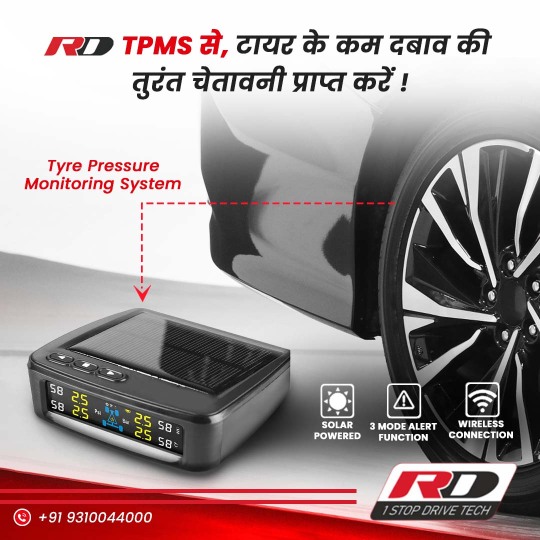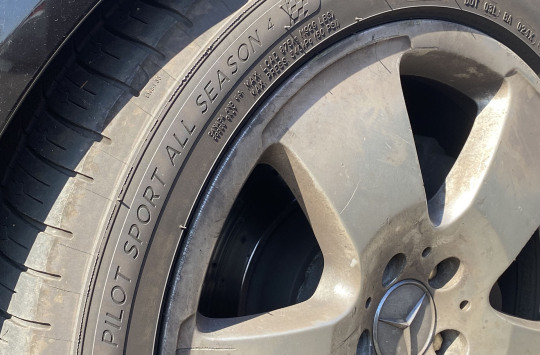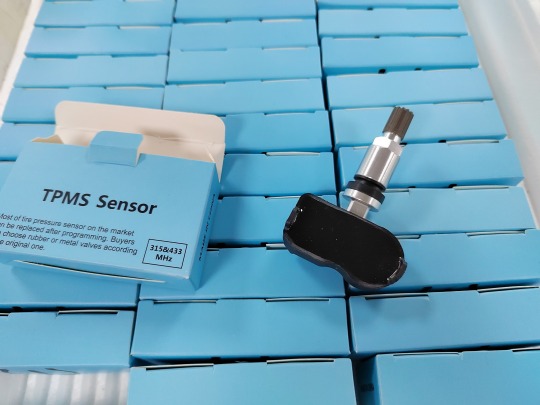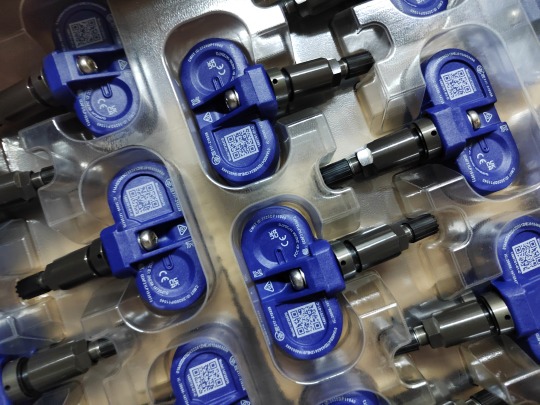#tpms
Text
Tesla's Dieselgate

Elon Musk lies a lot. He lies about being a “utopian socialist.” He lies about being a “free speech absolutist.” He lies about which companies he founded:
https://www.businessinsider.com/tesla-cofounder-martin-eberhard-interview-history-elon-musk-ev-market-2023-2
He lies about being the “chief engineer” of those companies:
https://www.quora.com/Was-Elon-Musk-the-actual-engineer-behind-SpaceX-and-Tesla
He lies about really stupid stuff, like claiming that comsats that share the same spectrum will deliver steady broadband speeds as they add more users who each get a narrower slice of that spectrum:
https://www.eff.org/wp/case-fiber-home-today-why-fiber-superior-medium-21st-century-broadband
The fundamental laws of physics don’t care about this bullshit, but people do. The comsat lie convinced a bunch of people that pulling fiber to all our homes is literally impossible — as though the electrical and phone lines that come to our homes now were installed by an ancient, lost civilization. Pulling new cabling isn’t a mysterious art, like embalming pharaohs. We do it all the time. One of the poorest places in America installed universal fiber with a mule named “Ole Bub”:
https://www.newyorker.com/tech/annals-of-technology/the-one-traffic-light-town-with-some-of-the-fastest-internet-in-the-us
Previous tech barons had “reality distortion fields,” but Musk just blithely contradicts himself and pretends he isn’t doing so, like a budget Steve Jobs. There’s an entire site devoted to cataloging Musk’s public lies:
https://elonmusk.today/
But while Musk lacks the charm of earlier Silicon Valley grifters, he’s much better than they ever were at running a long con. For years, he’s been promising “full self driving…next year.”
https://pluralistic.net/2022/10/09/herbies-revenge/#100-billion-here-100-billion-there-pretty-soon-youre-talking-real-money
He’s hasn’t delivered, but he keeps claiming he has, making Teslas some of the deadliest cars on the road:
https://www.washingtonpost.com/technology/2023/06/10/tesla-autopilot-crashes-elon-musk/
Tesla is a giant shell-game masquerading as a car company. The important thing about Tesla isn’t its cars, it’s Tesla’s business arrangement, the Tesla-Financial Complex:
https://pluralistic.net/2021/11/24/no-puedo-pagar-no-pagara/#Rat
Once you start unpacking Tesla’s balance sheets, you start to realize how much the company depends on government subsidies and tax-breaks, combined with selling carbon credits that make huge, planet-destroying SUVs possible, under the pretense that this is somehow good for the environment:
https://pluralistic.net/2021/04/14/for-sale-green-indulgences/#killer-analogy
But even with all those financial shenanigans, Tesla’s got an absurdly high valuation, soaring at times to 1600x its profitability:
https://pluralistic.net/2021/01/15/hoover-calling/#intangibles
That valuation represents a bet on Tesla’s ability to extract ever-higher rents from its customers. Take Tesla’s batteries: you pay for the battery when you buy your car, but you don’t own that battery. You have to rent the right to use its full capacity, with Tesla reserving the right to reduce how far you go on a charge based on your willingness to pay:
https://memex.craphound.com/2017/09/10/teslas-demon-haunted-cars-in-irmas-path-get-a-temporary-battery-life-boost/
That’s just one of the many rent-a-features that Tesla drivers have to shell out for. You don’t own your car at all: when you sell it as a used vehicle, Tesla strips out these features you paid for and makes the next driver pay again, reducing the value of your used car and transfering it to Tesla’s shareholders:
https://www.theverge.com/2020/2/6/21127243/tesla-model-s-autopilot-disabled-remotely-used-car-update
To maintain this rent-extraction racket, Tesla uses DRM that makes it a felony to alter your own car’s software without Tesla’s permission. This is the root of all autoenshittification:
https://pluralistic.net/2023/07/24/rent-to-pwn/#kitt-is-a-demon
This is technofeudalism. Whereas capitalists seek profits (income from selling things), feudalists seek rents (income from owning the things other people use). If Telsa were a capitalist enterprise, then entrepreneurs could enter the market and sell mods that let you unlock the functionality in your own car:
https://pluralistic.net/2020/06/11/1-in-3/#boost-50
But because Tesla is a feudal enterprise, capitalists must first secure permission from the fief, Elon Musk, who decides which companies are allowed to compete with him, and how.
Once a company owns the right to decide which software you can run, there’s no limit to the ways it can extract rent from you. Blocking you from changing your device’s software lets a company run overt scams on you. For example, they can block you from getting your car independently repaired with third-party parts.
But they can also screw you in sneaky ways. Once a device has DRM on it, Section 1201 of the DMCA makes it a felony to bypass that DRM, even for legitimate purposes. That means that your DRM-locked device can spy on you, and because no one is allowed to explore how that surveillance works, the manufacturer can be incredibly sloppy with all the personal info they gather:
https://www.cnbc.com/2019/03/29/tesla-model-3-keeps-data-like-crash-videos-location-phone-contacts.html
All kinds of hidden anti-features can lurk in your DRM-locked car, protected from discovery, analysis and criticism by the illegality of bypassing the DRM. For example, Teslas have a hidden feature that lets them lock out their owners and summon a repo man to drive them away if you have a dispute about a late payment:
https://tiremeetsroad.com/2021/03/18/tesla-allegedly-remotely-unlocks-model-3-owners-car-uses-smart-summon-to-help-repo-agent/
DRM is a gun on the mantlepiece in Act I, and by Act III, it goes off, revealing some kind of ugly and often dangerous scam. Remember Dieselgate? Volkswagen created a line of demon-haunted cars: if they thought they were being scrutinized (by regulators measuring their emissions), they switched into a mode that traded performance for low emissions. But when they believed themselves to be unobserved, they reversed this, emitting deadly levels of NOX but delivering superior mileage.
The conversion of the VW diesel fleet into mobile gas-chambers wouldn’t have been possible without DRM. DRM adds a layer of serious criminal jeopardy to anyone attempting to reverse-engineer and study any device, from a phone to a car. DRM let Apple claim to be a champion of its users’ privacy even as it spied on them from asshole to appetite:
https://pluralistic.net/2022/11/14/luxury-surveillance/#liar-liar
Now, Tesla is having its own Dieselgate scandal. A stunning investigation by Steve Stecklow and Norihiko Shirouzu for Reuters reveals how Tesla was able to create its own demon-haunted car, which systematically deceived drivers about its driving range, and the increasingly desperate measures the company turned to as customers discovered the ruse:
https://www.reuters.com/investigates/special-report/tesla-batteries-range/
The root of the deception is very simple: Tesla mis-sells its cars by falsely claiming ranges that those cars can’t attain. Every person who ever bought a Tesla was defrauded.
But this fraud would be easy to detect. If you bought a Tesla rated for 353 miles on a charge, but the dashboard range predictor told you that your fully charged car could only go 150 miles, you’d immediately figure something was up. So your Telsa tells another lie: the range predictor tells you that you can go 353 miles.
But again, if the car continued to tell you it has 203 miles of range when it was about to run out of charge, you’d figure something was up pretty quick — like, the first time your car ran out of battery while the dashboard cheerily informed you that you had 203 miles of range left.
So Teslas tell a third lie: when the battery charge reached about 50%, the fake range is replaced with the real one. That way, drivers aren’t getting mass-stranded by the roadside, and the scam can continue.
But there’s a new problem: drivers whose cars are rated for 353 miles but can’t go anything like that far on a full charge naturally assume that something is wrong with their cars, so they start calling Tesla service and asking to have the car checked over.
This creates a problem for Tesla: those service calls can cost the company $1,000, and of course, there’s nothing wrong with the car. It’s performing exactly as designed. So Tesla created its boldest fraud yet: a boiler-room full of anti-salespeople charged with convincing people that their cars weren’t broken.
This new unit — the “diversion team” — was headquartered in a Nevada satellite office, which was equipped with a metal xylophone that would be rung in triumph every time a Tesla owner was successfully conned into thinking that their car wasn’t defrauding them.
When a Tesla owner called this boiler room, the diverter would run remote diagnostics on their car, then pronounce it fine, and chide the driver for having energy-hungry driving habits (shades of Steve Jobs’s “You’re holding it wrong”):
https://www.wired.com/2010/06/iphone-4-holding-it-wrong/
The drivers who called the Diversion Team weren’t just lied to, they were also punished. The Tesla app was silently altered so that anyone who filed a complaint about their car’s range was no longer able to book a service appointment for any reason. If their car malfunctioned, they’d have to request a callback, which could take several days.
Meanwhile, the diverters on the diversion team were instructed not to inform drivers if the remote diagnostics they performed detected any other defects in the cars.
The diversion team had a 750 complaint/week quota: to juke this stat, diverters would close the case for any driver who failed to answer the phone when they were eventually called back. The center received 2,000+ calls every week. Diverters were ordered to keep calls to five minutes or less.
Eventually, diverters were ordered to cease performing any remote diagnostics on drivers’ cars: a source told Reuters that “Thousands of customers were told there is nothing wrong with their car” without any diagnostics being performed.
Predicting EV range is an inexact science as many factors can affect battery life, notably whether a journey is uphill or downhill. Every EV automaker has to come up with a figure that represents some kind of best guess under a mix of conditions. But while other manufacturers err on the side of caution, Tesla has the most inaccurate mileage estimates in the industry, double the industry average.
Other countries’ regulators have taken note. In Korea, Tesla was fined millions and Elon Musk was personally required to state that he had deceived Tesla buyers. The Korean regulator found that the true range of Teslas under normal winter conditions was less than half of the claimed range.
Now, many companies have been run by malignant narcissists who lied compulsively — think of Thomas Edison, archnemesis of Nikola Tesla himself. The difference here isn’t merely that Musk is a deeply unfit monster of a human being — but rather, that DRM allows him to defraud his customers behind a state-enforced opaque veil. The digital computers at the heart of a Tesla aren’t just demons haunting the car, changing its performance based on whether it believes it is being observed — they also allow Musk to invoke the power of the US government to felonize anyone who tries to peer into the black box where he commits his frauds.

If you'd like an essay-formatted version of this post to read or share, here's a link to it on pluralistic.net, my surveillance-free, ad-free, tracker-free blog:
https://pluralistic.net/2023/07/28/edison-not-tesla/#demon-haunted-world

This Sunday (July 30) at 1530h, I’m appearing on a panel at Midsummer Scream in Long Beach, CA, to discuss the wonderful, award-winning “Ghost Post” Haunted Mansion project I worked on for Disney Imagineering.

Image ID [A scene out of an 11th century tome on demon-summoning called 'Compendium rarissimum totius Artis Magicae sistematisatae per celeberrimos Artis hujus Magistros. Anno 1057. Noli me tangere.' It depicts a demon tormenting two unlucky would-be demon-summoners who have dug up a grave in a graveyard. One summoner is held aloft by his hair, screaming; the other screams from inside the grave he is digging up. The scene has been altered to remove the demon's prominent, urinating penis, to add in a Tesla supercharger, and a red Tesla Model S nosing into the scene.]

Image:
Steve Jurvetson (modified)
https://commons.wikimedia.org/wiki/File:Tesla_Model_S_Indoors.jpg
CC BY 2.0
https://creativecommons.org/licenses/by/2.0/deed.en
#pluralistic#steve stecklow#autoenshittification#norihiko shirouzu#reuters#you're holding it wrong#r2r#right to repair#range rage#range anxiety#grifters#demon-haunted world#drm#tpms#1201#dmca 1201#tesla#evs#electric vehicles#ftc act section 5#unfair and deceptive practices#automotive#enshittification#elon musk
8K notes
·
View notes
Text
2019 Audi A6 low tire pressure warning light reset.
Learn more: https://tpmsreset.com/?s=audi
2 notes
·
View notes
Photo

Got to stay updated just in case 😏😎👍🏾 #smartsensorpro #tpms https://www.instagram.com/p/Cpd2VhhNevR6UY1M1yKyQELHih1qIjQc7mfsjQ0/?igshid=NGJjMDIxMWI=
9 notes
·
View notes
Text

In the realm of automotive safety, Tire Pressure Monitoring Systems (TPMS) stand out as a pivotal innovation. TPMS, comprising sensors embedded in each tire, serves as a sentinel, consistently surveilling tire pressure and notifying drivers of any deviations from the recommended levels. This technology, found in virtually every modern TPMS car, not only bolsters safety but also contributes to fuel efficiency and extends tire lifespan.
TPMS sensors, strategically placed within the tires, are the backbone of this system. These sensors communicate with the vehicle's onboard computer system, which interprets the data and alerts the driver if tire pressure falls below or exceeds the optimal range. Such notifications are frequently displayed on the dashboard, furnishing real-time feedback to the driver.
0 notes
Text
How to find a tire leak using soap and water.
Learn more here: https://tpmsreset.com/
0 notes
Text
PARKPRO offers high quality automotive safety products including professional installation of PARKPRO Rear and Front Parking Sensors, Australia’s leading and most proven brand of OEM parking sensors, supported by a 5-year warranty.
1 note
·
View note
Text
https://treel.in/buy-products/
Maximizing Longevity and Performance: A Comprehensive Guide to Tyre Care
Explore the essential tips and tricks for maintaining your vehicle's tyres in optimal condition with our comprehensive guide to tyre care. Learn about proper inflation, regular inspections, alignment checks, and other crucial practices that can extend the lifespan of your tyres and enhance overall driving safety. Discover how simple maintenance routines can save you money in the long run and ensure a smoother and more efficient ride. Take control of your tyre health today!
0 notes
Text
Adding Retrofit TPMS Kits to Older or Non-Equipped Vehicles - Jacki Lutz @TireReview
Article from Tire Review, should you want TPMS 🙂
Although it might not feel like it, tire pressure monitoring systems (TPMS) have been around for quite a long time. TPMS has actually been in development since the early 1980s, and in 2008, TPMS was mandated to be installed on any vehicle sold in the United States. It might be difficult to believe, but that was 13 years ago. Knowing that the…

View On WordPress
0 notes
Text
Tire Pressure Monitor Fault: What Is It and How Do You Resolve It?
As a car owner, it is vital to understand all the technological supports designed to aid you in your vehicle’s safe and efficient operation. One such support is the Tire Pressure Monitoring System (TPMS). This critical technological advancement continuously monitors your car’s tire pressure, ensuring optimal performance for a superior driving experience and added safety.
However, like all complex systems, TPMS isn’t immune to faults. A tire pressure monitor fault occurs when the system fails to track your tire pressure accurately. The ramifications of these faults are far-reaching, impacting vehicle stability, control, and fuel efficiency. In severe cases, they can even result in tire blowouts, significantly compromising your safety.
What Is a Tire Pressure Monitor Fault?

Also called TPMS fault, a tire pressure monitor fault can result from various factors. Conditions leading to these faults could include improperly inflated tires, malfunctioning TPMS sensors, or dead sensor batteries. Sometimes, even external frequencies or devices could interfere with the TPMS, leading to disrupted, inaccurate readings.
Recognising and identifying a TPMS fault requires understanding the system’s warning mechanisms. For instance, an illuminated TPMS warning light on the dashboard clearly indicates a potential fault. Specific error messages relayed through the vehicle’s onboard diagnostics can also signal problems.
In addition to the warning light, visually inspecting your tires can offer additional clues. Look for signs of uneven wear, bulges, or punctures, as these could indicate a potential TPMS issue.
It’s essential to remember that understanding TPMS monitor faults isn’t just about recognising the warning signs. It involves being aware of the critical role TPMS plays in maintaining optimal tire pressure and vehicle safety. Moreover, ignorance of these faults can lead to significant consequences such as poor fuel efficiency, reduced tire lifespan and decreased driving comfort. They can even pose serious safety risks like tire blowouts, considered one of the most dangerous vehicular incidents.
Educating yourself about the causes and identification methods for TPMS monitor faults can equip you better to handle these issues, ensuring that your vehicle remains at peak operational efficiency. It also helps promote safer driving conditions and may even extend the longevity of your tires.
How to Troubleshoot TPMS Faults
Addressing a tire monitor fault requires a systematic troubleshooting approach, which may involve a combination of simple DIY solutions, using a bypass emulator and professional assistance, depending on the complexity of the issue.
Using DIY Solutions
If you encounter a TPM fault, consider taking the following actions:
Reset the TPMS: Sometimes, resetting the TPMS can clear a temporary fault in the system. Consult your vehicle’s owner’s manual for the correct resetting procedure for your specific make and model.
Check Tire Pressure: Ensure all your wheels are correctly inflated to the proper pressure, as specified in your vehicle’s owner’s manual or on the tire placard.
Inspect Sensors: Examine the TPMS sensors for any visible damage which may impede their performance. Repair or replace damaged sensors as needed.
Installing a TPMS Bypass Emulator
While TPMS faults can be challenging, some long-term solutions do not require making permanent changes to your vehicle. Among these solutions is the use of a TPMS bypass emulator.
This device essentially tricks your car’s system into thinking that all tires are properly inflated, silencing the pesky warning light. Using a TPMS bypass emulator can provide a sense of uninterrupted vehicle functionality, freeing you from recurring alerts due to TPMS faults.
Contrary to popular belief, these bypass emulators are not merely a quick fix or stopgap solution. Instead, when used responsibly with regular tire pressure checks, they can be a valuable part of a comprehensive approach to managing and mitigating TPMS monitor faults. They offer a way to ensure a consistent driving experience while effectively eliminating the interruptions caused by TPMS faults.
Getting Professional Help
There are undoubtedly situations where the TPMS issue persists, necessitating the intervention of a professional. Experienced automobile mechanics possess the required technical knowledge, training, and skills to accurately diagnose and rectify these faults, even if they are complex.
Not only do these experts troubleshoot the issue, but they also understand the potential causes and underlying problems that could have led to the TPM fault. Moreover, they are armed with specialised tools and diagnostic equipment, making detecting any faults more reliable and less time-consuming than attempting the job yourself.
Besides addressing the issue, professional help often entails a comprehensive examination of your vehicle’s systems related to tire pressure monitoring. This inclusive check could prevent future faults and ensure that your TPMS is working at its optimum ability.
How to Prevent a Tire Pressure Monitor Fault
Maintaining a healthy and reliable TPMS goes beyond just reacting to warning lights. Adopting a proactive approach to preventative care can significantly reduce the risk of TPMS faults, extend its lifespan, and ensure your vehicle remains safe and efficient.
The Power of Proper Tire Pressure
The cornerstone of TPMS prevention lies in maintaining proper tire pressure. Incorrect inflation, whether underinflated or overinflated, can lead to inaccurate readings and trigger TPMS alerts. By adhering to the manufacturer’s recommended pressure levels and regularly checking your tires with a reliable gauge, you can prevent minor issues from escalating into significant faults. This not only minimises TPMS problems but also promotes optimal tire wear, improved fuel efficiency, and enhanced driving safety.
Caring for Your TPMS Sensors
These vital components are responsible for transmitting pressure data to the system, making their care crucial. Replacing sensor batteries when they reach their lifespan, typically around 5-10 years, ensures accurate readings and optimal system functionality. Additionally, exercising caution when changing tires or washing your vehicle helps prevent accidental sensor damage.
Mastering the Reset and Inspection Routine
Familiarising yourself with your vehicle’s TPMS reset process can be incredibly helpful. Often, a simple reset can rectify minor glitches and save you a trip to the mechanic. Moreover, scheduling regular professional inspections allows for early detection and resolution of potential problems before they escalate into significant faults.
Reaping the Benefits of Proactive Maintenance
By implementing these preventative measures, you can reap numerous benefits. The risk of experiencing frustrating TPMS faults diminishes, extending the life of your system and ensuring its continued effectiveness. More importantly, you contribute to your vehicle’s overall safety and efficiency, allowing you to enjoy a smooth and worry-free driving experience.
Remember, investing a little time and effort in preventative TPMS care can go a long way in safeguarding your car’s performance and your peace of mind.
In conclusion, a tire pressure monitor fault should not be taken lightly. As mentioned above, it can have profound implications – from reduced fuel efficiency to possible tire blowouts, which could jeopardise your vehicle’s safety.
Understanding the fundamental causes, recognising warning signs, and implementing DIY and professional solutions can help keep these issues at bay. Additionally, investing in a TPMS bypass device can offer peace of mind, knowing that potential disruptions are effectively managed. More importantly, implementing preventative measures and regular checks to ensure TPMS functionality maximises tire efficiency and longevity.
Remember that knowledge is the key to a smooth and enjoyable driving experience. Understand your vehicle well and care for it conscientiously – and it will serve you reliably and safely on every journey.
Are you tired of the relentless tire pressure monitor fault in your vehicle? Why not use our high-quality, patented TPMS bypass emulators to turn off that troublesome TPMS light once and for all? Visit this page now and find the perfect emulator for your vehicle to experience uninterrupted peace of mind on the road.
0 notes
Text
2014 Mercedes GLK tire pressure warning light reset.
Learn more: https://tpmsreset.com/?s=mercedes
2 notes
·
View notes
Text
0 notes
Text




Are any of your car’s tires looking lower than normal? You may have a flat tire, or it could have something to do with the outside temperature.
As winter approaches, it’s important to keep an eye on your vehicle’s tire pressure.
This is especially true if you are planning to travel long distances for the holiday season or winter vacations.
Tire pressure is one of the items our automotive technicians check when performing a digital vehicle inspection.
#tire pressure#tire pressure monitoring system#tpms#low tire pressure#hometowne auto repair and tire#prince william county
0 notes
Text

The strong bond of tyre and TPMS is a never-ending journey for assuring your safety 💪 We long for your tyres life so that you have a safe and controlled journey, along with reducing your carbon footprint!🛣️
0 notes





